Staying One Step Ahead of Delays and Infractions with These Few Checklist Points

Picture this: You're cruising down Interstate 80, the sun dipping low, radio humming a classic tune about wide-open roads. As a carrier, you have picked up a load in a trailer, and it is on schedule. You've got that rare stretch of empty highway ahead. Then, flashing lights in the rearview. Heart sinks a bit. It's not just the pull-over that stings; it's the uncertainty. Will this turn into a quick chat or a full-blown halt with paperwork flying and fingers pointing at worn belts or foggy lights? Every carrier in trucking, and every trucker, knows that feeling. Those moments pile up, turning a smooth run into a headache that echoes for days. Fines bite into your pocket, delays mess with your home time, and one bad report can shadow your record like a storm cloud.
But here's the truth: You don't have to roll the dice every mile. A solid routine turns those inspections from threats into minor blips. This guide lays it all out plain and simple. We'll walk through what inspectors look for, point by point, so you can build a checklist that keeps your rig inspection-ready. And because no driver's an island, we'll talk about why teaming up with a freight outfit like Buchanan Logistics, Inc. makes the whole grind easier. Their setup isn't just about loads, it's about backing you with real know-how so you focus on the wheel, not the worry.
What Happens When the Lights Flash?
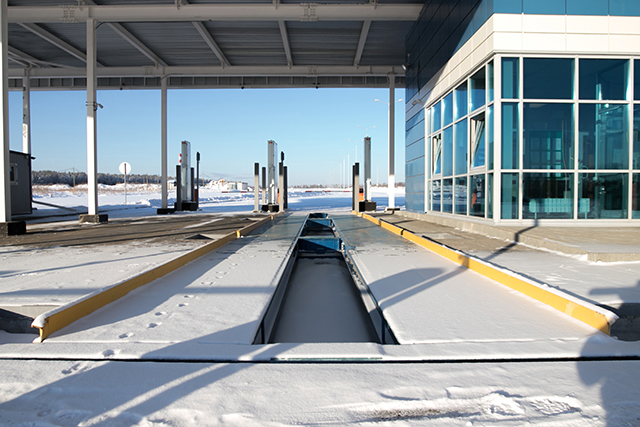
Roadside checks aren't random gotchas. They're the frontline for keeping highways safe, run by folks from the Commercial Vehicle Safety Alliance (CVSA). These inspectors, often state troopers or DOT pros, spot rigs at scales, rest areas, or even mid-merge if something looks off. They decide the level based on time, traffic, and red flags like smoke belching from your stack or tires screaming low pressure.
Most times, it's a Level 2: Driver credentials, hours logs, and a walk-around for basics. Or Level 3: Just you and your docs, no truck touch. But if it's Level 1, the deep dive, they're under the hood, in the cab, and circling every axle. Expect 30 minutes to an hour, maybe more if they call in a mechanic. They'll ask for your CDL, medical card, logbook (or ELD printout), and vehicle papers. Stay cool, park safe, kill the engine, and hand over what they need. Answer straight, no rambling. If it's clean, you're rolling in under 15. If not, out-of-service orders ground you till fixed, could be hours or a tow.
The stress? It's real. That knot in your gut comes from knowing one glitch means rescheduling deliveries, calling dispatch, maybe even dipping into savings for repairs. And it's not just you: Shippers get antsy, brokers juggle backups, and your rep takes a hit. Last year alone, over 4 million inspections nationwide flagged issues on nearly 20% of trucks. But drivers who prep? They sail through, clocking more miles and less drama.
Building Your Bulletproof Checklist
Think of this as your daily shield. Run it before dawn or after fueling, takes 15 minutes, saves hours. It's drawn from FMCSA standards, tweaked for what inspectors hammer on most. Print it, laminate it, stick it in your door. Check off as you go, note defects, and snap pics for records. Do it every shift, and those lights in the mirror become a wave hello, not a siren song. For a printable checklist, click here.
Engine Compartment: The Heart of the Beast

Start here, hood up, engine off. This is where heat and grit chew through parts fastest. Inspectors love finding loose wires or drips; they're easy outs.
- Oil level: Dipstick clean, between marks. Top off if low, but hunt leaks first.
- Coolant: Reservoir full, no cracks in hoses. Feel for soft spots, bulges mean failure waiting.
- Belts and hoses: No frays, cracks, or glazing. Tug 'em; they shouldn't slip or squeak on startup.
- Battery: Terminals are tight, no corrosion. Cables secure, fluid-topped if accessible.
- Alternator and water pump: Mounts bolted, pulleys spinning free. Listen for whines when you fire up.
- Leaks: Wipe clean, run idle, check for fresh spots. Oil, coolant, fuel, any drip's a flag.
- Air compressor: Hoses intact, no oil residue in tanks.
Pro Tip: If your stack's sooty, mention it to dispatch. Could be a tune-up cue, not just dirt.
Front and Rear Suspension: Steady as She Goes

Bounce the corners, the truck should settle evenly, no wild rocks. Inspectors test this by pushing down; uneven means trouble.
- Springs: No breaks, sags, or missing leaves. U-bolts tight.
- Shocks: No leaks, mounts solid. Extend and compress smoothly.
- Axles: Straight, no bends. Seals dry, hubs greased.
- Steering: Box secure, linkages free of play. Tires match, treads even.
- Brakes: Chambers not rusted, slack adjusters aligned. Push rods move equally.
Rear's the same drill, plus trailer connections if hitched. Greasing fittings every 5,000 miles keeps 'em forgiving.
Brakes That Bite: No Room for Fade
This is non-negotiable; brakes fail, everyone loses. Inspectors measure pushrod stroke; over 1/4 inch, you're sidelined.
- Drums and pads: Min 1/4 inch thick, no cracks. Shoes even wear.
- Lines and hoses: No abrasions, bulges. Gladhands seal tight.
- Valves: Quick-release and relay working. Test park brake, holds on hill.
- Air system: Built to 120 PSI, no leaks. Governor cuts at 130.
Brake lightly on a ramp post-check. Feels mushy? Fix before fueling.
Tires and Wheels: Grip or Slip
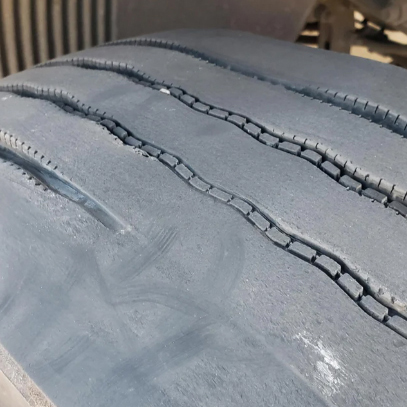
Inspectors eyeball these first; bald spots scream neglect—federal min tread: 4/32 inch steering, 2/32 others.
- Pressure: Per door sticker, cold. Add 5 PSI if loaded.
- Tread: Even, no cuts, bulges. Tools gauge depth quickly.
- Wheels: Nuts torqued, no rust rings. Duals match, no rubbing.
- Fenders: Secure, no sharp edges.
Rotate every 10k, align yearly. A blowout's not just scary, it's a CSA point bomb.
Lights and Signals: Seen and Safe
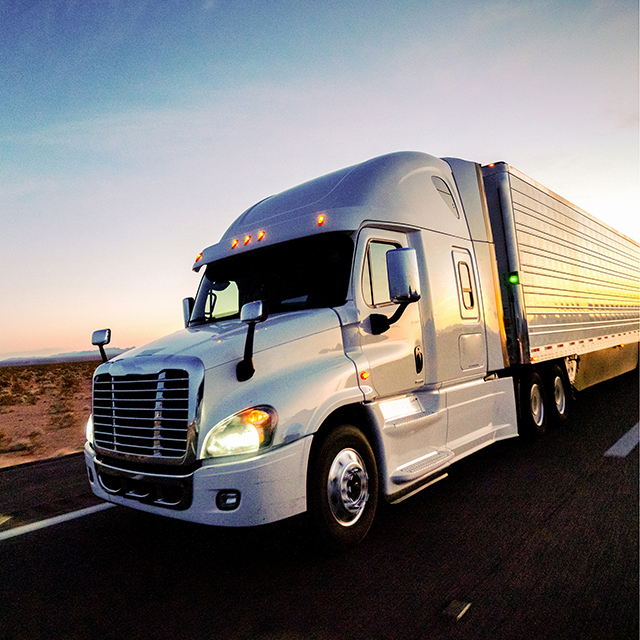
Night or day, these save lives. Inspectors flip 'em on, walk the rig.
- Headlights: High/low beams sharp, lenses clear.
- Turns and hazards: All four corners flash sync.
- Brakes: Bright red, no flicker. Markers glow steadily.
- Reflectors: Clean, intact. License plate lit.
Test from the cab and the ground. Buddy system helps if solo.
Cargo and Trailer: Locked and Loaded
Secure it right, or it's all for naught. Tie-downs are rated double weight.
- Doors: Latch firm, seals tight. No gaps for shifts.
- Securement: Chains/straps tight, no slack. Angles proper.
- Landing gear: Cranks smooth, pads even.
- Fifth wheel: Locked, plate greased, light.
Walk the load post-secure. Snug? Good. Shifty? Rethink.
Cab Check: Your Command Center
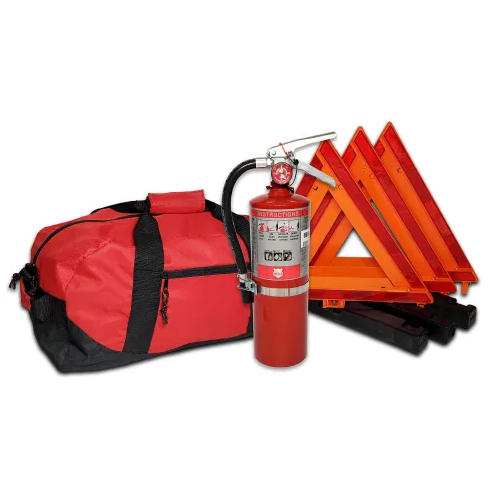
Inside's half the battle, inspectors scan for fatigue signs too.
- Seatbelt: Retracts clean, no frays.
- Mirrors: Adjusted, crack-free. Wipers streak-free.
- Gauges: Oil pressure 40 PSI idle, air 100+.
- Emergency gear: Extinguisher charged, triangles ready, flares fresh.
- Logs: Current, no gaps. The medical card is valid.
Steer from stop to start smoothly. Horn blasts clear.
Coupling Gear: The Handshake That Holds
If trailers are on, this seals the deal.
- Air lines: No kinks, connected firm.
- Electrical: Plug seated, no pins bent.
- Kingpin: Engaged full, no play.
- Apron: No damage, clearance good.
- Tug Test: Roll slow, feel the lock.
Exhaust and Fuel: Clean Burn
No black clouds or puddles.
- Pipes: Secure, no holes. Muffler quiet.
- Tanks: Caps tight, no spills. DEF is full if equipped.
- Idle Sniff Test: Sweet? Coolant leak. Acrid? Fuel issue.
Final Walk-Around: Eyes Everywhere
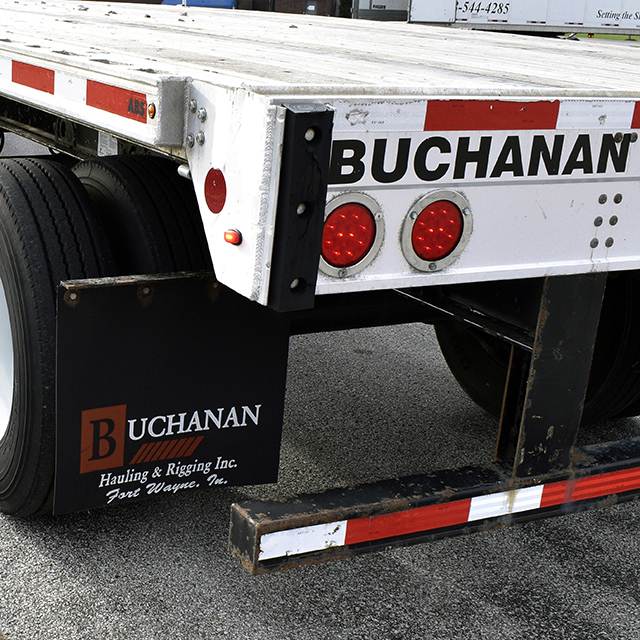
Circle slowly, look low. Inspectors do.
- Frame: No cracks, welds sound.
- Mud flaps: Present, not torn.
- Splash guards: In place.
Note weather, wet roads, amp tire scrutiny.
Making It Stick: Habits That Last
This list isn't gospel, but it IS gold. Customize for your rig, flatbed haulers add step checks, reefer drivers fridge temps. Apps are fine, but paper's king for quick scans. Share with your fleet; group texts on common fails build smarts.
Train newbies here, role-play inspections over coffee. And log everything: Date, time, fixes. CSA scores, etc.
Why be a Carrier for Buchanan Logistics?
You're nailing inspections, but the road's longer than one truck. Freight's fickle, deadhead miles eat fuel, spotty loads kill rhythm. That's where a brokerage steps in, and Buchanan Logistics, Inc. isn't your average middleman. Born from the cab of founder Geary Buchanan's own rig back in 1996, they've hauled from one flatbed to a network spanning van, flat, reefer, and heavy specialized gear. Today, they're a Top 100 brokerage per Transport Topics, moving loads coast-to-coast with a 99% on-time punch.
What sets us apart? Start with the asset edge. Backed by sister outfit Buchanan Hauling & Rigging, they've got skin in the game; over 300 trucks means they flex their own wheels when networks snag. No "sorry, carrier bailed" excuses. Their dispatchers, many ex-drivers, get the grind: They route around inspection hotspots, flag high-CSA zones, and pair you with lanes that match your clean record. Imagine pulling consistent runs from Midwest manufacturing hubs to East Coast ports, skipping the backtracks.
Expertise shines in their tech stack. Real-time tracking via their TMS lets you ping ETAs, dodge detours, and prove on time to shippers. For a driver chasing CSA gold, that's leverage, fewer points, better rates. They've handled everything from DOD crates to farm gear, earning nods for HAZMAT precision and oversized permits. Trust? Family-run, they preach values like "B-Valued", drivers aren't numbers; you're the backbone. Check their mission and family values page; it's not fluff, it's how they treat carriers like kin.
Authoritativeness? Thirty years stacking wins: From bootstrapping to 9,000+ vetted partners, they've outlasted booms and busts. Locations in key nodes and outposts for seamless handoffs, mean quick pickups, and less idle time. Their freight capabilities cover LTL to full truckload, so whether you're dry van or stepdeck, they've got the match.
And the proof? Carriers stick, low turnover, repeat business. One hauler shared how Buchanan's quick-pay turned tight weeks into steady cash, letting him front the cash for repairs without sweat. Another praised their compliance nudges: "They texted a brake recall before I saw the sign." That's the Buchanan Advantage: proactive, not reactive.
Tie it to inspections: A clean rig scores you a priority in their queue. Buchanan's team reviews carrier profiles, bumping safe operators to the top for premium shippers. Fewer violations? Better lanes, higher pay per mile. It's a cycle: Their support keeps you compliant, your compliance keeps their network gold.
Explore their story at about us. See our locations for regional fits. Curious about a run? Peek what to expect.

Deep Dive: Real Road Tales from the Inspection Line
Take Mike, a flatbed vet out of Ohio. Last spring, he got lit up on I-70 for a loose mud flap, minor, but it snowballed. The inspector dug deeper, found a slack brake adjuster. Two hours sidelined, $500 fix, and a CSA ding that cost him a choice lane. "Felt like I let the whole team down," he said. But Mike bounced back. He taped this checklist to his dashboard, ran it religiously. Next three checks? Clean sheets. Now he's pulling Buchanan's oversized steel runs, home weekends, pockets fuller.
Or Lisa, reefer specialist from Texas. Pulled for a foggy marker light, simple bulb swap, but it sparked a full Level 1. Turned out her air dryer was weeping; out for three hours. Stress peaked when dispatch radioed a tight deadline. "It's not the wait," she vented. "It's the what-ifs piling on." Lisa's fix? Weekly cab audits, plus Buchanan's carrier portal alerts for recalls. Their expertise flagged that dryer model early. Result: Zero OOS in a year, steady Gulf-to-Northeast produce hauls.
These aren't outliers. FMCSA data shows prepped drivers cut violations by 40%.
Tuning the Checklist for Your Rig Type
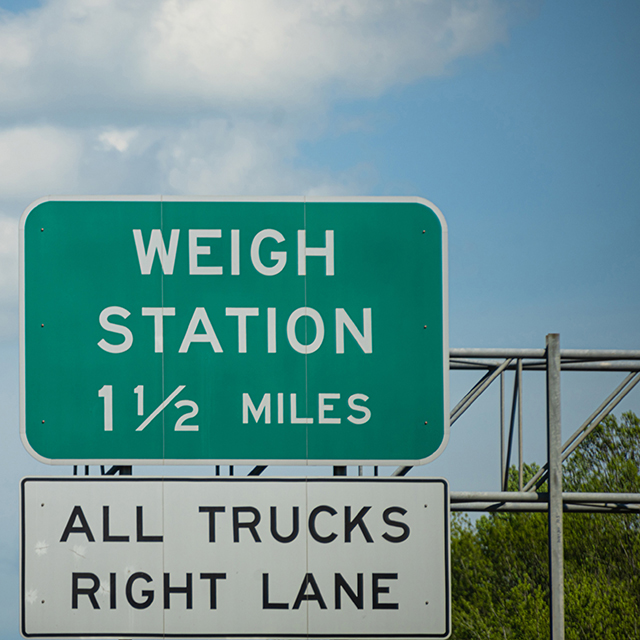
- Flatbed? Double-check securement; inspectors pounce on loose chains. Add: Landing legs extended full, no twists in slings.
- Reefer? Temp logs mandatory. Checklist add: Unit cycles quiet, hoses frost-free, bulkhead seals.
- Tanker? Baffles secure, valves drip-tight. Pressure test domes.
- Dry van? Doors swing free, e-track intact. No cargo shifts on turns.
The Ripple Effect: How Clean Runs Boost Your Bottom Line
Spotless inspections do more than dodge tickets. Low CSA scores unlock better insurance rates, saving 10-20% yearly. Brokers like Buchanan prioritize you for high-value loads: $3/mile vs $2. Their network, built on trust, means fewer no-shows, more backhauls.
Experience counts: Buchanan's 600+ pros have logged millions of miles, earning spots on Armstrong & Associates' top lists. Trustworthiness? Zero tolerance for unsafe carriers, vets every rig, every driver. Authoritativeness shows in partnerships: From farm co-ops to manufacturers, they move it all, on time, every time.
See their mission and family values; it's about lifting drivers, not just freight.
Wrapping the Day: Your Move

You've got the checklist, the lowdown on inspections, and a partner blueprint. Now, make it yours. Grab that notepad, hit the yard, run the rounds. Feel the difference? That's control. And when loads call, don't chase shadows, link with a crew that hauls with you.
Ready to load up smarter? Head to Buchanan's rate request form. Drop your specs, get quotes fast. Let's keep those wheels turning, lights off in the mirror, and miles stacking high. Drive safely out there.



